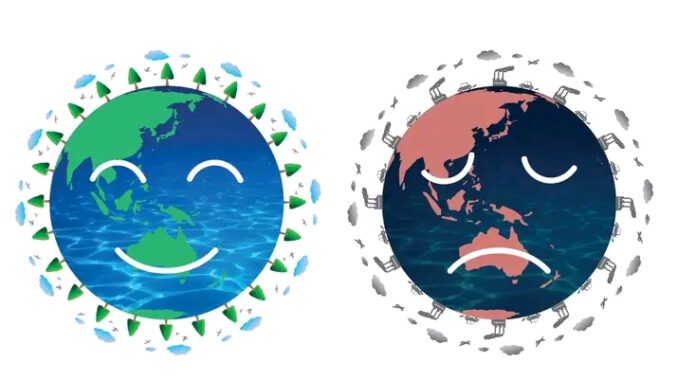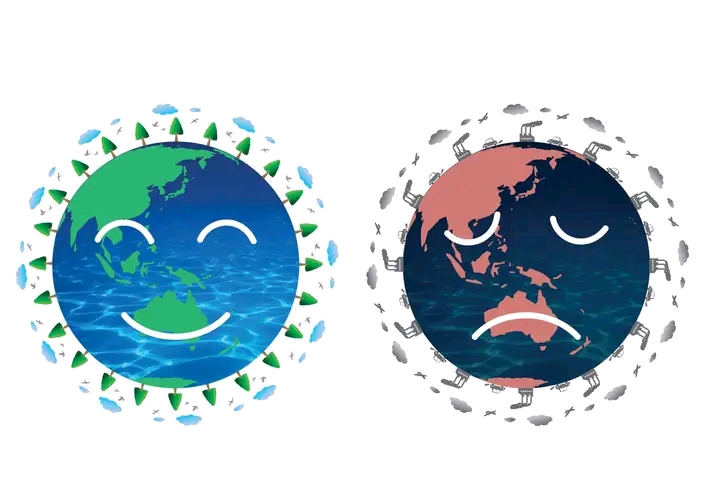
CLIMATE CHANGE AND INSURANCE: IMPACT ON POLICIES AND RATES
Climate change poses significant challenges to the insurance industry, impacting both insurance policies and rates. The escalating frequency and severity of extreme weather events, such as hurricanes, wildfires, and floods, have led to a surge in insurance claims, prompting insurers to reassess their risk models and pricing strategies.
Insurers are grappling with the unpredictability of climate-related risks, as traditional actuarial models may no longer suffice in accurately assessing the potential losses. The changing climate introduces new variables and uncertainties, making it essential for insurers to adopt more sophisticated risk assessment tools and predictive analytics.
One major concern is the increased exposure to property damage. Rising sea levels and more intense storms elevate the risk of coastal and inland flooding, leading insurers to reconsider coverage options and adjust policy terms. Insurers may also face challenges in managing liability risks, especially in sectors vulnerable to climate-related litigation, such as fossil fuel industries or companies with significant environmental footprints.
The growing awareness of climate change and its impact has led to a shift in consumer behavior. Policyholders are increasingly seeking coverage for climate-related risks and demanding transparency from insurers regarding their sustainability efforts. This has prompted insurance companies to develop new products and services that address these concerns, including parametric insurance and green policies that incentivize environmentally responsible behavior.
The rise in climate-related claims has prompted some insurers to limit coverage in high-risk areas or withdraw from certain markets altogether. This can lead to a reduction in available coverage options for individuals and businesses in regions prone to climate-related disasters, creating challenges for those seeking adequate protection.

CLIMATE CHANGE AND INSURANCE: IMPACT ON POLICIES AND RATES
To manage the evolving landscape, insurers are investing in research and collaboration with climate scientists to better understand and model the potential impact of climate change on their portfolios. Regulatory bodies are also increasingly requiring insurers to disclose their exposure to climate risks, ensuring greater transparency and accountability within the industry.
In terms of rates, the increased frequency and severity of climate-related events have led to upward pressure on insurance premiums. Insurers must compensate for higher anticipated losses by adjusting pricing structures to maintain their financial stability. This can result in increased costs for policyholders, particularly in regions with a higher likelihood of climate-related incidents.
Impact on Insurance Policies
Reassessment of Risk Models Insurers are revisiting their risk assessment models to incorporate the evolving nature of climate-related risks. This includes considering not only historical data but also future projections to better understand and quantify potential losses.
Property Damage Coverage Adjustments With the increased threat of extreme weather events, insurers are reevaluating property damage coverage. This involves adjusting policy terms to account for the heightened risk of damage caused by events such as hurricanes, wildfires, and flooding.
Liability Risks Management Industries with significant climate-related liabilities, like fossil fuels, are facing challenges in obtaining adequate liability coverage. Insurers are carefully managing these risks and, in some cases, placing limitations on coverage for high-liability sectors.
CLIMATE CHANGE AND INSURANCE: IMPACT ON POLICIES AND RATES
Introduction of Specialized Products Insurers are developing specialized products to address climate-related risks. Parametric insurance, for instance, pays out based on predefined triggers like wind speed or rainfall, providing quicker and more transparent payouts in the event of a covered occurrence.
Green Policies and Sustainable Practices: In response to consumer demands for environmentally responsible options, insurers are introducing green policies. These policies often offer discounts or benefits for sustainable practices, encouraging policyholders to adopt eco-friendly measures.
Impact on Insurance Rates
Premium Increases: The rise in the frequency and severity of climate-related events is putting upward pressure on insurance premiums. Insurers must adjust rates to adequately cover the anticipated increase in claims and maintain financial stability.
Reduction in Coverage Availability: In high-risk areas prone to climate-related disasters, insurers may limit coverage or even withdraw from the market. This reduction in coverage availability can lead to challenges for individuals and businesses seeking comprehensive protection in vulnerable regions.
Consumer Behavior Influence: The growing awareness of climate change is influencing consumer behavior. As more individuals seek coverage for climate-related risks, insurers may respond by adjusting rates based on the perceived risk associated with specific regions or types of policies.
CLIMATE CHANGE AND INSURANCE: IMPACT ON POLICIES AND RATES
Regulatory Requirements:Regulatory bodies are increasingly mandating insurers to disclose their exposure to climate risks. This push for transparency ensures that insurers are held accountable for their risk management practices and allows regulators to assess the industry’s overall resilience to climate-related challenges.
Investments in Research and Collaboration:Insurers are investing in research and collaborating with climate scientists to enhance their understanding of climate risks. This proactive approach is crucial for developing more accurate risk models and refining pricing strategies to reflect the changing climate landscape.
In summary, the impact of climate change on insurance policies and rates is multifaceted, requiring insurers to adapt their approaches to risk assessment, coverage options, and pricing structures. As the effects of climate change continue to unfold, the insurance industry must remain agile and innovative in responding to emerging challenges and consumer expectations.
Adoption of Technology and Data Analytics:
Insurers are increasingly leveraging advanced technologies and data analytics to enhance their risk assessment capabilities. Satellite imagery, climate models, and other sophisticated tools enable insurers to better predict and understand the potential impact of climate-related events. This data-driven approach helps insurers refine their underwriting processes and set more accurate premium rates.
Catastrophe Bonds and Alternative Risk Transfer Mechanisms
To manage the heightened risk associated with climate change, insurers are exploring alternative risk transfer mechanisms such as catastrophe bonds. These financial instruments allow insurers to transfer a portion of their risk to capital markets, providing a source of funding in the aftermath of a catastrophic event. This innovation helps insurers mitigate the financial impact of large-scale climate-related losses.
CLIMATE CHANGE AND INSURANCE: IMPACT ON POLICIES AND RATES
International Collaboration and Risk Pooling
Given the global nature of climate change, insurers are engaging in international collaborations and risk pooling initiatives. By sharing risks across a broader geographic scope, insurers can diversify their exposure and better manage the financial impact of climate-related events. This approach promotes a more resilient and sustainable insurance industry on a global scale.
Strategic Partnerships with Governments and NGOs
Insurers are forming strategic partnerships with governments and non-governmental organizations (NGOs) to address the challenges posed by climate change. These collaborations aim to develop risk mitigation strategies, improve disaster resilience, and create innovative insurance solutions tailored to specific regions or vulnerable populations.
Education and Public Awareness Campaigns:
Recognizing the importance of proactive risk management, insurers are investing in education and public awareness campaigns. These initiatives aim to inform individuals and businesses about the potential risks associated with climate change, encouraging them to take preventive measures and purchase insurance coverage that aligns with their evolving needs.
Long-Term Investment Strategies
Insurers are incorporating climate risk considerations into their long-term investment strategies. This involves divesting from high-carbon assets and redirecting investments towards sustainable and climate-resilient projects. By aligning their investment portfolios with environmentally conscious practices, insurers contribute to broader efforts to combat climate change while also managing their financial exposure.
Regulatory Changes and Reporting Requirements:
Governments and regulatory bodies are implementing changes to address the impact of climate change on the insurance industry. This includes introducing new reporting requirements that compel insurers to disclose their climate-related risks and strategies for mitigation. Adherence to these regulations not only ensures transparency but also fosters a collective industry-wide response to climate challenges.
CLIMATE CHANGE AND INSURANCE: IMPACT ON POLICIES AND RATES
Innovation in Loss Prevention and Mitigation
Insurers are actively involved in promoting innovation in loss prevention and mitigation measures. This includes incentivizing policyholders to adopt resilient construction practices, implement sustainable land-use planning, and invest in technologies that reduce the likelihood and severity of climate-related losses. These proactive measures contribute to the overall reduction of risk in insured portfolios.
The intersection of climate change and insurance is driving a transformative shift in the industry. Insurers are embracing technological advancements, forming strategic partnerships, and redefining traditional practices to adapt to the evolving risks and ensure the long-term sustainability of the insurance sector in the face of climate-related challenges.
In conclusion, climate change is reshaping the insurance industry, influencing both policies and rates. Insurers are navigating a complex landscape of evolving risks, demanding a proactive approach to risk assessment, product innovation, and sustainable business practices to adapt to the challenges posed by a changing climate.
CLIMATE CHANGE AND INSURANCE: IMPACT ON POLICIES AND RATES
Leave a Reply